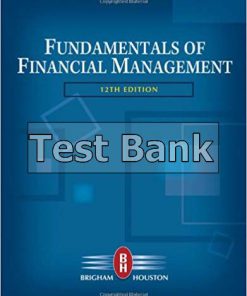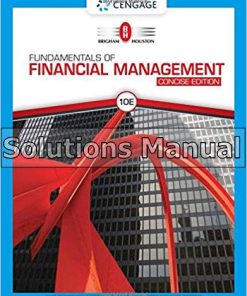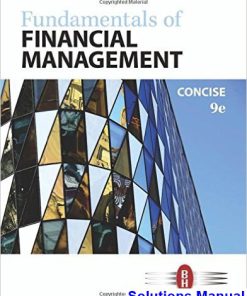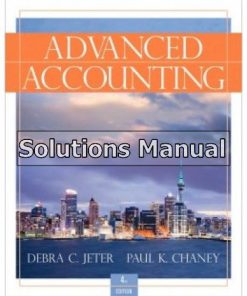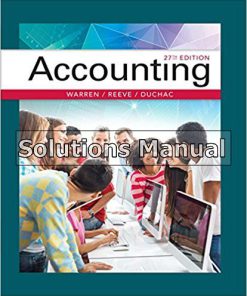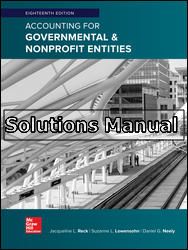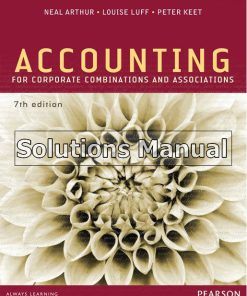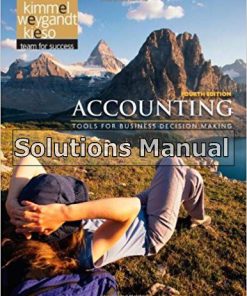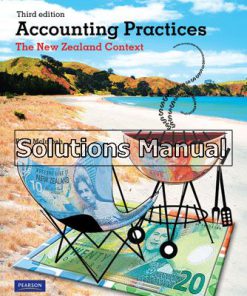Fundamentals of Financial Management 15th Edition Brigham Solutions Manual
$50.00 Original price was: $50.00.$26.50Current price is: $26.50.
Fundamentals of Financial Management 15th Edition Brigham Solutions Manual.
This is completed downloadable of Fundamentals of Financial Management 15th Edition Brigham Solutions Manual
Product Details:
- ISBN-10 : 9781337395250
- ISBN-13 : 978-1337395250
- Author: Eugene F. Brigham (Author), Joel F. Houston (Author)
Updated with the latest trends, developments, and practices from the field, Brigham/Houston’s FUNDAMENTALS OF FINANCIAL MANAGEMENT, 15e equips you with a thorough understanding of today’s corporate finance and financial management. This longtime market leader offers insight into federal debt, the ongoing recovery of financial markets, and other emerging issues straight from today’s headlines. Clear explanations and real-world examples help you understand the “what” and the “why” of corporate budgeting, financing, working capital decision making, forecasting, valuation, and Time Value of Money, while hands-on exercises, cases, Excel Spreadsheet Models, and digital resources like MindTap let you put theory into action.
Table of Content:
- Part 1: Introduction to Financial Management
- Chapter 1: An Overview of Financial Management
- Putting Things in Perspective
- 1-1 What Is Finance?
- 1-2 Jobs in Finance
- 1-3 Forms of Business Organization
- 1-4 The Main Financial Goal: Creating Value for Investors
- 1-5 Stockholder-Manager Conflicts
- 1-6 Stockholder-Debtholder Conflicts
- 1-7 Balancing Shareholder Interests and the Interests of Society
- 1-8 Business Ethics
- Tying It All Together
- Self-Test Questions and Problems
- Questions
- Chapter 2: Financial Markets and Institutions
- Putting Things in Perspective
- 2-1 The Capital Allocation Process
- 2-2 Financial Markets
- 2-3 Financial Institutions
- 2-4 The Stock Market
- 2-5 The Market for Common Stock
- 2-6 Stock Markets and Returns
- 2-7 Stock Market Efficiency
- Tying It All Together
- Self-Test Questions and Problems
- Questions
- Integrated Case
- Part 2: Fundamental Concepts in Financial Management
- Chapter 3: Financial Statements, Cash Flow, and Taxes
- Putting Things in Perspective
- 3-1 Financial Statements and Reports
- 3-2 The Balance Sheet
- 3-3 The Income Statement
- 3-4 Statement of Cash Flows
- 3-5 Statement of Stockholders’ Equity
- 3-6 Uses and Limitations of Financial Statements
- 3-7 Free Cash Flow
- 3-8 MVA and EVA
- 3-9 Income Taxes
- Tying It All Together
- Self-Test Questions and Problems
- Questions
- Problems
- Comprehensive/Spreadsheet Problem
- Integrated Case
- Taking a Closer Look
- Chapter 4: Analysis of Financial Statements
- Putting Things in Perspective
- 4-1 Ratio Analysis
- 4-2 Liquidity Ratios
- 4-3 Asset Management Ratios
- 4-4 Debt Management Ratios
- 4-5 Profitability Ratios
- 4-6 Market Value Ratios
- 4-7 Tying the Ratios Together: The DuPont Equation
- 4-8 Potential Misuses of ROE
- 4-9 Using Financial Ratios to Assess Performance
- 4-10 Uses and Limitations of Ratios
- 4-11 Looking beyond the Numbers
- Tying It All Together
- Self-Test Questions and Problems
- Questions
- Problems
- Comprehensive/Spreadsheet Problem
- Integrated Case
- Taking a Closer Look
- Chapter 5: Time Value of Money
- Putting Things in Perspective
- 5-1 Time Lines
- 5-2 Future Values
- 5-3 Present Values
- 5-4 Finding the Interest Rate, I
- 5-5 Finding the Number of Years, N
- 5-6 Annuities
- 5-7 Future Value of an Ordinary Annuity
- 5-8 Future Value of an Annuity Due
- 5-9 Present Value of an Ordinary Annuity
- 5-10 Finding Annuity Payments, Periods, and Interest Rates
- 5-11 Perpetuities
- 5-12 Uneven Cash Flows
- 5-13 Future Value of an Uneven Cash Flow Stream
- 5-14 Solving for I with Uneven Cash Flows
- 5-15 Semiannual and Other Compounding Periods
- 5-16 Comparing Interest Rates
- 5-17 Fractional Time Periods
- 5-18 Amortized Loans
- Tying It All Together
- Self-Test Questions and Problems
- Questions
- Problems
- Comprehensive/Spreadsheet Problem
- Integrated Case
- Part 3: Financial Assets
- Chapter 6: Interest Rates
- Putting Things in Perspective
- 6-1 The Cost of Money
- 6-2 Interest Rate Levels
- 6-3 The Determinants of Market Interest Rates
- 6-4 The Term Structure of Interest Rates
- 6-5 What Determines the Shape of the Yield Curve?
- 6-6 Using the Yield Curve to Estimate Future Interest Rates
- 6-7 Macroeconomic Factors That Influence Interest Rate Levels
- 6-8 Interest Rates and Business Decisions
- Tying It All Together
- Self-Test Questions and Problems
- Questions
- Problems
- Comprehensive/Spreadsheet Problem
- Integrated Case
- Taking a Closer Look
- Chapter 7: Bonds and Their Valuation
- Putting Things in Perspective
- 7-1 Who Issues Bonds?
- 7-2 Key Characteristics of Bonds
- 7-3 Bond Valuation
- 7-4 Bond Yields
- 7-5 Changes in Bond Values over Time
- 7-6 Bonds with Semiannual Coupons
- 7-7 Assessing a Bond’s Riskiness
- 7-8 Default Risk
- 7-9 Bond Markets
- Tying It All Together
- Self-Test Questions and Problems
- Questions
- Problems
- Comprehensive/Spreadsheet Problem
- Integrated Case
- Taking a Closer Look
- Chapter 8: Risk and Rates of Return
- Putting Things in Perspective
- 8-1 The Risk-Return Trade-Off
- 8-2 Stand-Alone Risk
- 8-3 Risk in a Portfolio Context: The CAPM
- 8-4 The Relationship between Risk and Rates of Return
- 8-5 Some Concerns about Beta and the CAPM
- 8-6 Some Concluding Thoughts: Implications for Corporate Managers and Investors
- Tying It All Together
- Self-Test Questions and Problems
- Questions
- Problems
- Comprehensive/Spreadsheet Problem
- Integrated Case
- Taking a Closer Look
- Chapter 9: Stocks and Their Valuation
- Putting Things in Perspective
- 9-1 Legal Rights and Privileges of Common Stockholders
- 9-2 Types of Common Stock
- 9-3 Stock Price versus Intrinsic Value
- 9-4 The Discounted Dividend Model
- 9-5 Constant Growth Stocks
- 9-6 Valuing Nonconstant Growth Stocks
- 9-7 Enterprise-Based Approach to Valuation
- 9-8 Preferred Stock
- Tying It All Together
- Self–Test Questions and Problems
- Questions
- Problems
- Comprehensive/Spreadsheet Problem
- Integrated Case
- Taking a Closer Look
- Appendix 9A: Stock Market Equilibrium
- Part 4: Investing in Long-Term Assets: Capital Budgeting
- Chapter 10: The Cost of Capital
- Putting Things in Perspective
- 10-1 An Overview of the Weighted Average Cost of Capital (WACC)
- 10-2 Basic Definitions
- 10-3 Cost of Debt, rd(1-T)
- 10-4 Cost of Preferred Stock, rp
- 10-6 Cost of New Common Stock, re
- 10-7 Composite, or Weighted Average, Cost of Capital, WACC
- 10-8 Factors That Affect the WACC
- 10-9 Adjusting the Cost of Capital for Risk
- 10-10 Some Other Problems with Cost of Capital Estimates
- Tying It All Together
- Self-Test Questions and Problems
- Questions
- Problems
- Comprehensive/Spreadsheet Problem
- Integrated Case
- Taking a Closer Look
- Chapter 11: The Basics of Capital Budgeting
- Putting Things in Perspective
- 11-1 An Overview of Capital Budgeting
- 11-2 Net Present Value (NPV)
- 11-3 Internal Rate of Return (IRR)
- 11-4 Multiple Internal Rates of Return
- 11-5 Reinvestment Rate Assumptions
- 11-6 Modified Internal Rate of Return (MIRR)
- 11-7 NPV Profiles
- 11-8 Payback Period
- 11-9 Conclusions on Capital Budgeting Methods
- 11-10 Decision Criteria Used in Practice
- Tying It All Together
- Self-Test Questions and Problems
- Questions
- Problems
- Comprehensive/Spreadsheet Problem
- Integrated Case
- Chapter 12: Cash Flow Estimation and Risk Analysis
- Putting Things in Perspective
- 12-1 Conceptual Issues in Cash Flow Estimation
- 12-2 Analysis of an Expansion Project
- 12-3 Replacement Analysis
- 12-4 Risk Analysis in Capital Budgeting
- 12-5 Measuring Stand-Alone Risk
- 12-6 Within-Firm and Beta Risk
- 12-7 Unequal Project Lives
- Tying It All Together
- Self-Test Questions and Problems?
- Questions
- Problems
- Comprehensive/Spreadsheet Problem
- Integrated Case
- Appendix 12A: Tax Depreciation
- Chapter 13: Real Options and Other Topics in Capital Budgeting
- Putting Things in Perspective
- 13-1 Introduction to Real Options
- 13-2 Growth (Expansion) Options
- 13-3 Abandonment/Shutdown Options
- 13-4 Investment Timing Options
- 13-5 Flexibility Options
- 13-6 The Optimal Capital Budget
- 13-7 The Post-Audit
- Tying It All Together
- Self-Test Questions and Problems
- Questions
- Problems
- Comprehensive/Spreadsheet Problems
- Integrated Case
- Part 5: Capital Structure and Dividend Policy
- Chapter 14: Capital Structure and Leverage
- Putting Things in Perspective
- 14-1 Book, Market, or “Target” Weights?
- 14-2 Business and Financial Risk
- 14-3 Determining the Optimal Capital Structure
- 14-4 Capital Structure Theory
- 14-5 Checklist for Capital Structure Decisions
- 14-6 Variations in Capital Structures
- Putting Things in Perspective
- Tying It All Together
- Questions
- Problems
- Comprehensive/Spreadsheet Problem
- Integrated Case
- Taking a Closer Look
- Chapter 15: Distributions to Shareholders: Dividends and Share Repurchases
- Putting Things in Perspective
- 15-1 Dividends versus Capital Gains: What Do Investors Prefer?
- 15-2 Other Dividend Policy Issues
- 15-3 Establishing the Dividend Policy in Practice
- 15-4 Dividend Reinvestment Plans
- 15-5 Summary of Factors Influencing Dividend Policy
- 15-6 Stock Dividends and Stock Splits
- 15-7 Stock Repurchases
- Tying It All Together
- Self-Test Questions and Problems
- Questions
- Problems
- Comprehensive/Spreadsheet Problem
- Integrated Case
- Taking a Closer Look
- Part 6: Working Capital Management and Financial Forecasting
- Chapter 16: Working Capital Management
- Putting Things in Perspective
- 16-1 Background on Working Capital
- 16-2 Current Assets Investment Policies
- 16-3 Current Assets Financing Policies
- 16-4 The Cash Conversion Cycle
- 16-5 The Cash Budget
- 16-6 Cash and Marketable Securities
- 16-7 Inventories
- 16-8 Accounts Receivable
- 16-9 Accounts Payable (Trade Credit)
- 16-10 Bank Loans
- 16-11 Commercial Paper
- 16-12 Accruals (Accrued Liabilities)
- 16-13 Use of Security in Short-Term Financing
- Tying It All Together
- Self-Test Questions and Problems
- Questions
- Problems
- Comprehensive/Spreadsheet Problem
- Integrated Case
- Chapter 17: Financial Planning and Forecasting
- Putting Things in Perspective
- 17-1 Strategic Planning
- 17-2 The Sales Forecast
- 17-3 The AFN Equation
- 17-4 Forecasted Financial Statements
- 17-5 Using Regression to Improve Forecasts
- 17-6 Analyzing the Effects of Changing Ratios
- Tying It All Together
- Self-Test Questions and Problems
- Questions
- Problems
- Comprehensive/Spreadsheet Problem
- Integrated Case
- Taking a Closer Look
- Part 7: Special Topics in Financial Management
- Chapter 18: Derivatives and Risk Management
- Putting Things in Perspective
- 18-1 Reasons to Manage Risk
- 18-2 Background on Derivatives
- 18-3 Options
- 18-4 Introduction to Option Pricing Models
- 18-5 The Black-Scholes Option Pricing Model (OPM)
- 18-6 Forward and Futures Contracts
- 18-7 Other Types of Derivatives
- 18-8 Using Derivatives to Reduce Risks
- 18-9 Risk Management
- Tying It All Together
- Self-Test Questions and Problems
- Questions
- Problems
- Comprehensive/Spreadsheet Problem
- Integrated Case
- Taking a Closer Look
- Appendix 18A: Valuation of Put Options
- Chapter 19: Multinational Financial Management
- Putting Things in Perspective
- 19-1 Multinational, or Global, Corporations
- 19-2 Multinational versus Domestic Financial Management
- 19-3 The International Monetary System
- 19-4 Foreign Exchange Rate Quotations
- 19-5 Trading in Foreign Exchange
- 19-6 Interest Rate Parity
- 19-7 Purchasing Power Parity
- 19-8 Inflation, Interest Rates, and Exchange Rates
- 19-9 International Money and Capital Markets
- 19-10 Investing Overseas
- 19-11 International Capital Budgeting
- 19-12 International Capital Structures
- Tying It All Together
- Self-Test Questions and Problems
- Questions
- Problems
- Comprehensive/Spreadsheet Problem
- Integrated Case
- Taking a Closer Look
- Chapter 20: Hybrid Financing: Preferred Stock, Leasing, Warrants, and Convertibles
- Putting Things in Perspective
- 20-1 Preferred Stock
- 20-2 Leasing
- 20-3 Warrants
- 20-4 Convertibles
- 20-5 A Final Comparison of Warrants and Convertibles
- 20-6 Reporting Earnings When Warrants or Convertibles Are Outstanding
- Tying It All Together
- Self-Test Questions and Problems?
- Questions
- Problems
- Comprehensive/Spreadsheet Problem
- Integrated Case
- Taking a Closer Look
- Chapter 21: Mergers and Acquisitions
- Putting Things in Perspective
- 21-1 Rationale for Mergers
- 21-2 Types of Mergers
- 21-3 Level of Merger Activity
- 21-4 Hostile versus Friendly Takeovers
- 21-5 Merger Analysis
- 21-6 The Role of Investment Bankers
- 21-7 Do Mergers Create Value? The Empirical Evidence
- 21-8 Corporate Alliances
- 21-9 Private Equity Investments
- 21-10 Divestitures
- Tying It All Together
- Self-Test Questions and Problems
- Questions
- Problems
- Comprehensive/Spreadsheet Problem
- Integrated Case
- Taking a Closer Look
- Appendix A: Solutions to Self-Test Questions and Problems
- Appendix B: Answers to Selected End-of-Chapter Problems
- Appendix C: Selected Equations and Tables
- Index
People Also Search:
fundamentals of financial management brigham
fundamentals of financial management 15th edition brigham
fundamentals of financial management
fundamentals of financial management 15th edition
fundamentals of financial management 15th edition download scribd
fundamentals of financial management 15th edition solution manual download pdf
Instant download after Payment is complete
You may also like…
Management
Fundamentals of Financial Management Concise Edition 8th Edition Brigham Solutions Manual
Solutions Manual
Fundamentals of Financial Management Concise Edition 10th Edition Brigham Solutions Manual
Management
Fundamentals of Financial Management Concise Edition 9th Edition Brigham Solutions Manual
Related products
Solutions Manual
Solutions Manual
Solutions Manual
Accounting For Governmental And Nonprofit Entities 18th Edition Reck Solutions Manual
Solutions Manual
A+ Guide to IT Technical Support Hardware and Software 9th Edition Andrews Solutions Manual
Solutions Manual







